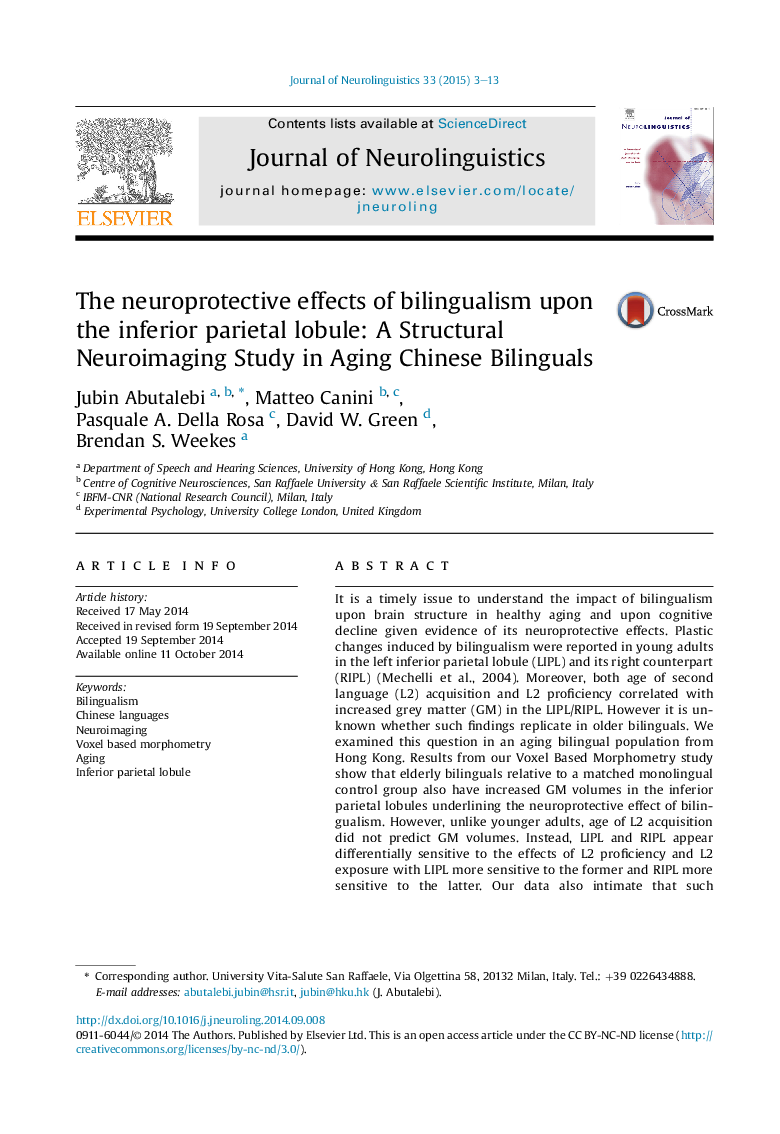ترجمه فارسی عنوان مقاله
اثرات محافظت نورونی دوزبانگی بر لوبول آهیانه پایینی: مطالعه ساختاری تصویربرداری در افراد دوزبانه سالخورده چینی
عنوان انگلیسی
The neuroprotective effects of bilingualism upon the inferior parietal lobule: A Structural Neuroimaging Study in Aging Chinese Bilinguals
| کد مقاله | سال انتشار | تعداد صفحات مقاله انگلیسی |
|---|---|---|
| 59263 | 2015 | 11 صفحه PDF |
منبع

Publisher : Elsevier - Science Direct (الزویر - ساینس دایرکت)
Journal : Journal of Neurolinguistics, Volume 33, February 2015, Pages 3–13
ترجمه کلمات کلیدی
دوزبانگی؛ زبان چینی؛ تصویربرداری عصبی؛ مورفومتری بر اساس وکسل ؛ پیری - لوبول آهیانه پایینی
کلمات کلیدی انگلیسی
Bilingualism; Chinese languages; Neuroimaging; Voxel based morphometry; Aging; Inferior parietal lobule

